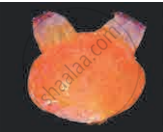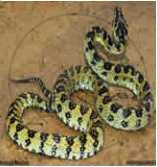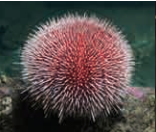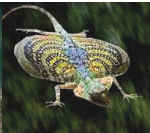Advertisements
Advertisements
Question
Identify the animal given in the picture and write features of its phylum/class.

Solution
The organism is Herdmania and belongs to Phylum Chordata (Subphylum Urochordata).
Features of Phylum Chordata (Subphylum Urochordata):
- It is called a chordate as it shows the following features:
a. Presence of notochord at least in early embryonic life. (In Herdmania, the notochord is present in the tail of the larval forms).
b. Presence of hollow, dorsal nerve chord, running throughout the length of the body.
c. Presence of pharyngeal gill slits.
d. Presence of post-anal tail. - Habitat: They are exclusively marine.
- Body covering: Soft body is covered by ‘test’ or ‘tunic’ which is made up of tunicate.
- Notochord: Notochord is present only in the tail of the larva and is lost during metamorphosis. Hence, the name Urochordata.
- Respiration: Pharynx with many gill slits for respiration.
- Circulation: Closed circulatory system is present.
- Reproduction: Development is indirect. e.g. Herdmania, Salpa, Doliolum, Ascidia.
APPEARS IN
RELATED QUESTIONS
Answer the following question.
Reptiles are known for having three-chambered heart. Which animal shows a near four-chambered condition in reptiles?
Answer the following question.
Pinna is part of the external ear and it is found in mammals. Do aves and reptiles show external ear in any form?
Answer the following question.
Fish and frog can respire in water. Can they respire through their skin? If yes, why do they have gills?
Answer the following question.
Crab and Snail both have a protective covering. Is it made up of the same material?
Draw a neat labelled diagram.
Amphioxus
Draw a neat labelled diagram.
Catla
Match the following.
| Phylum | Characters |
| i. Annelida | a. Tube feet |
| ii. Mollusca | b. Ostia |
| iii. Ctenophora | c. Radula |
| iv. Porifera | d. Parapodia |
| v. Echinodermata | e. Comb plates |
Identify the animal given in the picture and write features of its phylum/class.

Identify the animal given in the picture and write features of its phylum/class.

Identify the animal given in the picture and write features of its phylum/class.

